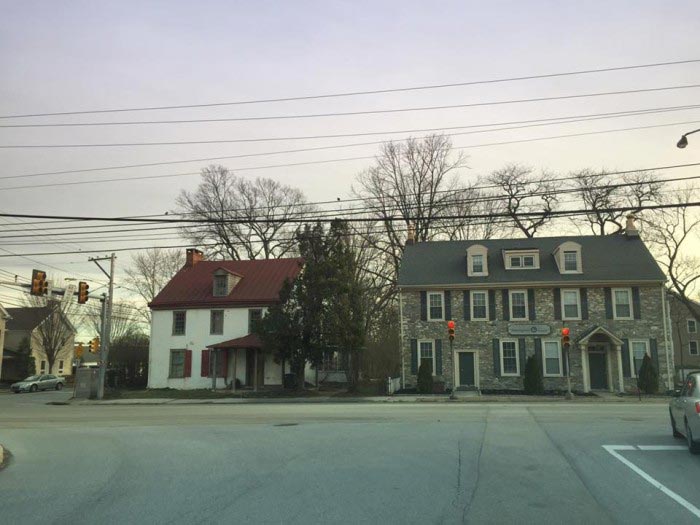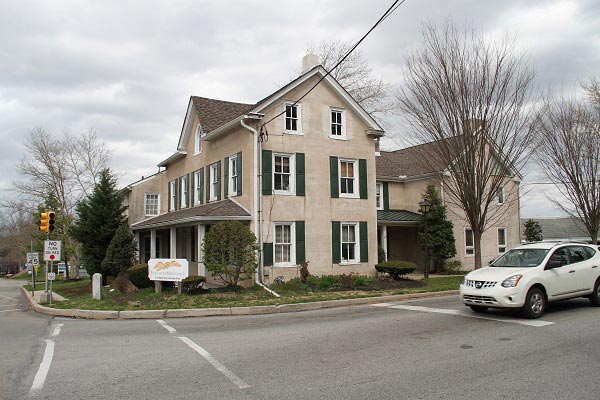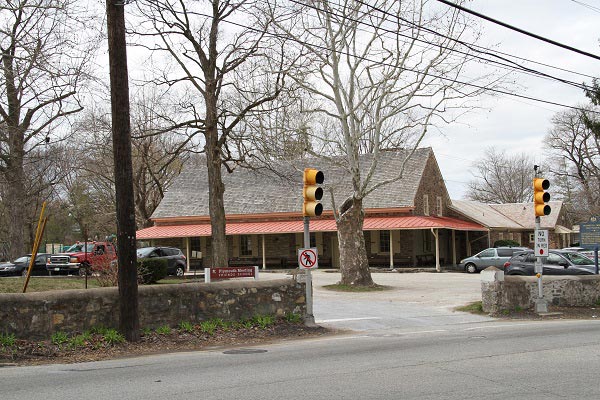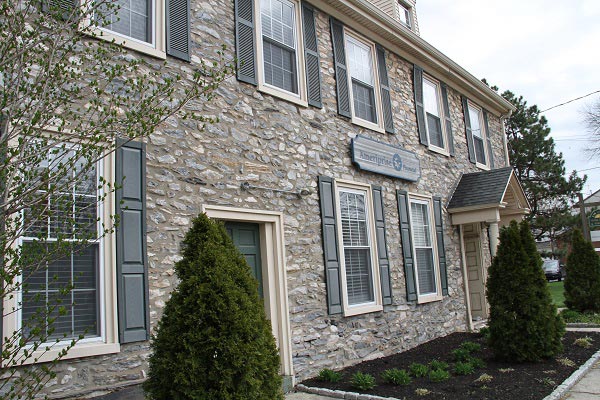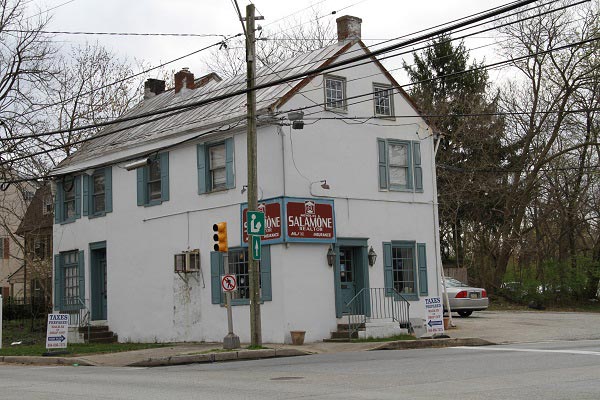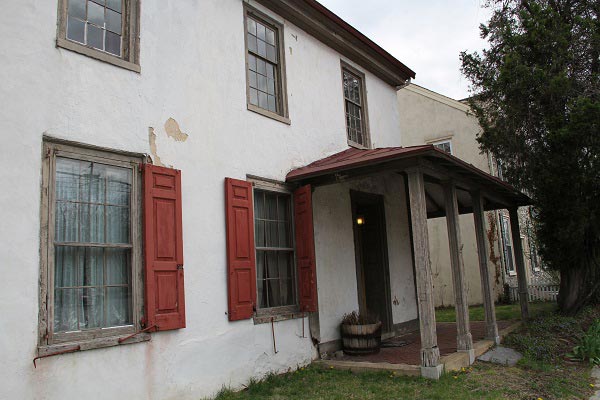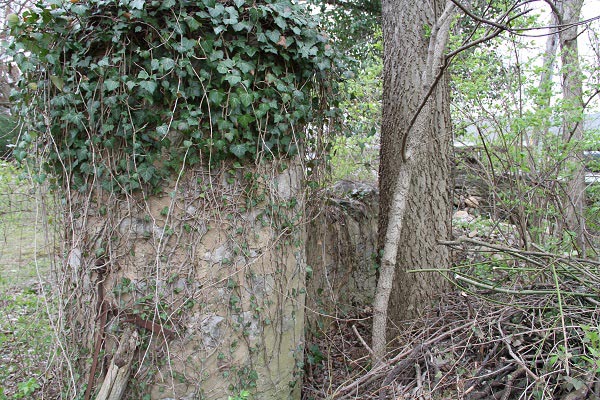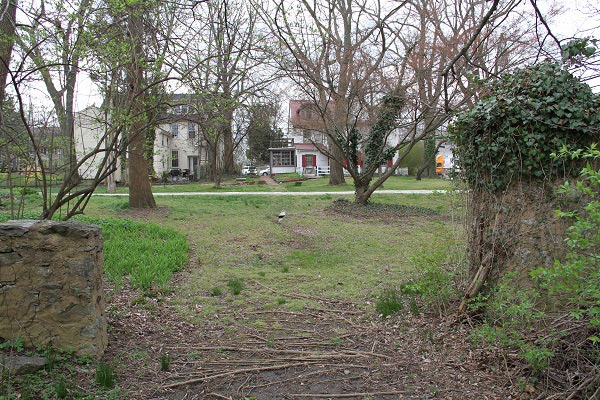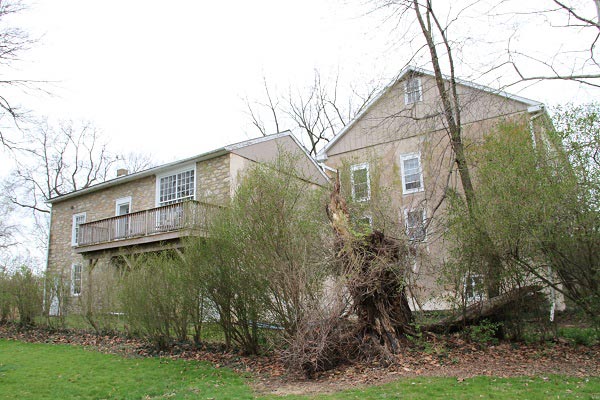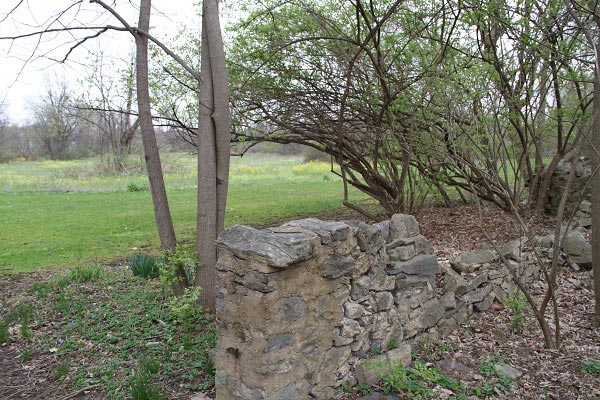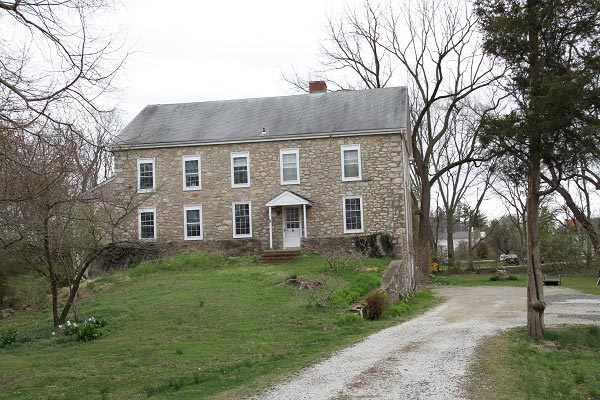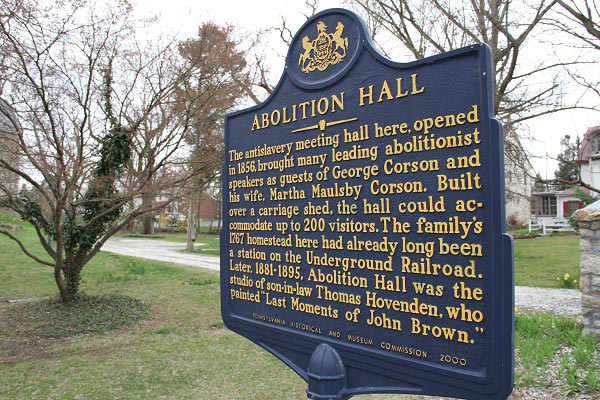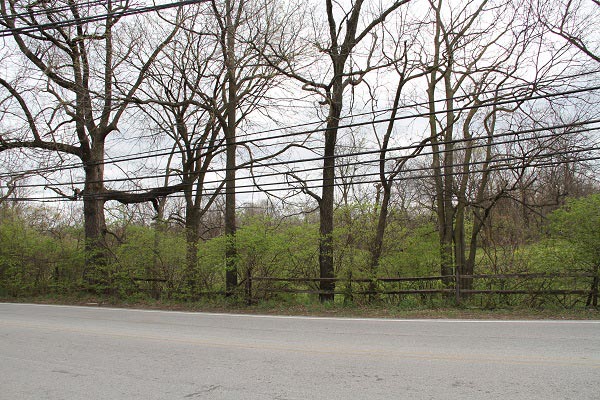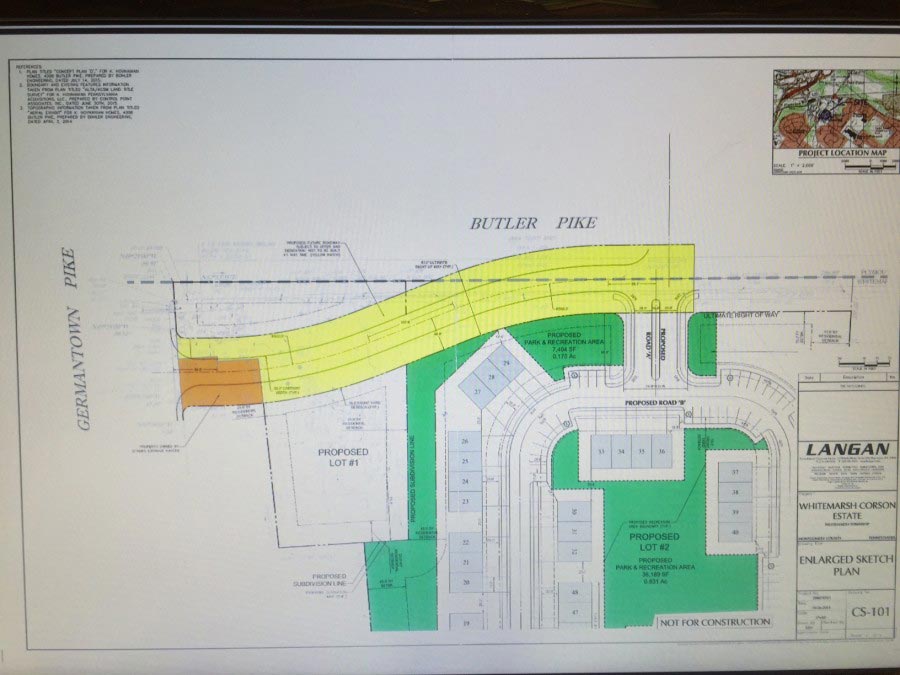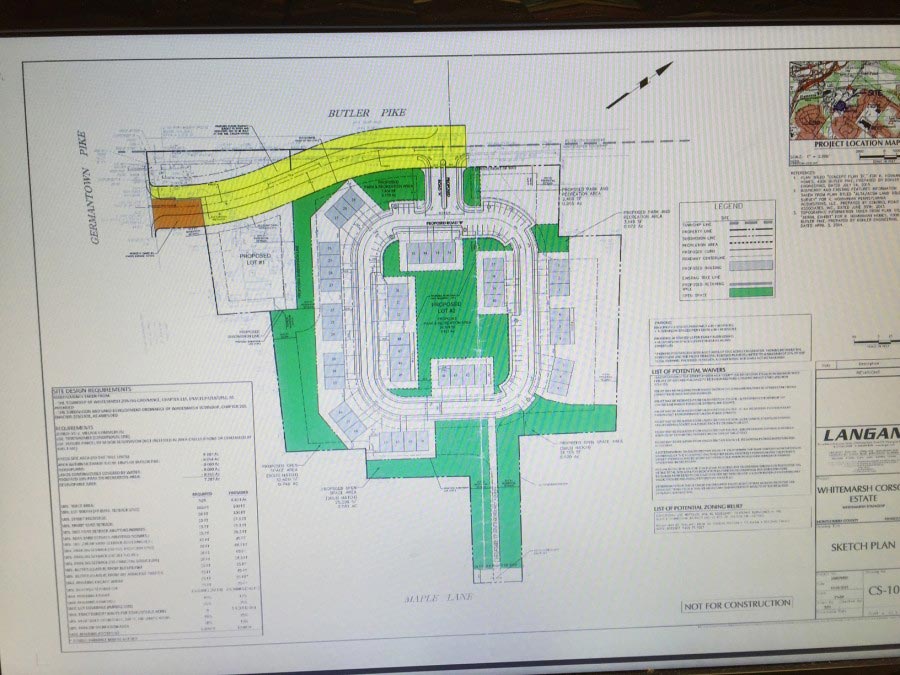People of Conshohocken – George Bruno
April 6, 2016
P-W High School for sale? Must see!!!
April 26, 2016The intersection at Butler Pike and Germantown Pike could change as well as the entire landscape
Could CHANGE be coming to Butler Pike and Germantown Pike?
by Brian Coll
A few weeks ago we posted a photo to our Facebook page of the intersection at Butler and Germantown. At the time we posted the photo we also included the following text: This intersection may change soon. So much history may be lost due to new town homes. The Underground Railroad was right in this section of Whitemarsh. I don’t know about you, but I’m okay with the slight turn around these historic homes.
That photo and post had over 100 comments and a number of “likes” “dislikes” “angry faces” and so on….. most people were shocked and a number of local residents had even asked how we got the word that it may be happening. Since that post generated so much public outcry, I have spent some time researching the proposal and the reason why this intersection may change. I have spoke to a few concerned citizens who live in this area as well as tracked down some info on the proposal itself and the next meeting date, which is actually a HEARING in front of the Zoning Board. (April 25th 7:00) This HEARING is your chance to be heard. Facebook comments aren’t going to be heard, you need to attend this meeting and speak up.
Before I go into the history of the property and the area involved, let me personally say this…. I am not in favor of this project. I’m sure there are people who may have a stake in this project who may not share my opinion, I’m sure there are some people who simply pass through this section on their daily commute and may see the logic in the proposal and not share my opinion. Part of my opinion was formed at a young age and my love of history. While this section of our community isn’t as popular as say Valley Forge, this section of our community is integral to the growth of our community and the birth of our new nation. This property has direct ties to the Underground Railroad. The Underground Railroad helped bring slaves and former slaves north where they could pursue a better life. Once the Civil War was over, a number of former slaves in the Carolina’s came north as free men and started working at the Alan Wood Steel Company in Conshohocken/Plymouth. These workers helped shape our community. They took pride in their work, raised their families here, and contributed to the community in many ways. I don’t want to see this tie to the community disappear under townhomes.
Here is a brief history of the Corson property provided by Dr. David R. Contosta ( he was co -author of the book Images of America Plymouth and Whitemarsh Townships) and Sydelle Zove
Art, Abolition, and the Corson Property of Plymouth Meeting
The Corson property at the northeast corner of Germantown and Butler Pikes in Plymouth Meeting is an iconic site—for the local community and our nation. Here, abolitionists gathered to speak out against the evils of slavery and take action to end it. A generation later it became the home of Thomas Hovenden (1840-1895); at the time of his death Hovenden was the most famous genre painter in the United States.
One-hundred-sixty years ago, Plymouth Meeting was a major center of the anti-slavery movement and the Underground Railroad, which helped escaping slaves make their way to freedom in Canada where slavery was illegal. Several members of the Corson family were in the thick of both activities. One of them was George Corson, who in 1858 added a second story to his stable, which came to be known as “Abolition Hall.” Famous abolitionists including William Lloyd Garrison, Frederick Douglas, Stephen and Abby Foster, Charles Burleigh, Miller McKim, Elijah Pennypacker, and Lucretia Mott (also a leader of the women’s movement) spoke in the hall, which could hold an audience of over 200 people.
George Corson’s artist daughter Helen married fellow artist Thomas Hovenden. They lived in the corner house on the property, built about 1767. There Hovenden created two of the country’s most famous canvases of the past century and a quarter. The earlier is “The Last Moments of John Brown” (now hanging in New York’s Metropolitan Museum of Art), which depicts the scene as Brown was about to be taken off to the gallows to be hanged for leading a raid on Harper’s Ferry. The second is “Breaking Home Ties” (long a prized possession of the Philadelphia Museum of Art) about a young man who must say good-bye to his farm family as he departs for opportunities in the big city.
Hovenden painted several dozen pictures of local artisans whose trades were already on the wane by the late 1800s. Among these works of art were “The Traveling Clock Mender,” “The Cabinet Maker,” and “The Blacksmith.” He also depicted the lives of free black men from the nearby Village of Cold Point. Several such men owned property and dwellings there, and one was employed by a Corson family member to construct houses. Among the best known and most admired of Hovenden’s African-American genre paintings are “Cloe and Sam” and “Dem Was Good Ole Times.”
Hovenden’s wife Helen also chose neighbors and family members as subjects for her paintings. There was “Uncle Ned and his Pupil,” which shows an elderly African-American man teaching a young boy to play the banjo, and “The Concert,” which depicts daughter Martha playing a harmonica as the family dog listens intently. Martha Hovenden grew up to become a talented sculptor and is best known for the bronze tablets she designed for the Washington Memorial Chapel at Valley Forge. Martha also created a bookplate for the William Jeanes Memorial Library, which was later adopted as the logo for the Friends of the Library.
The Village of Plymouth Meeting has the distinction of being the first Pennsylvania district named to the National Register of Historic Places. That nomination dates to 1971. The Hovenden House and Abolition Hall (with its attached barn) are among six structures individually named to the National Register. In 2000, Nancy Corson, great-granddaughter of George and Helen Corson, delighted in the Pennsylvania Museum and Historical Commission’s installation of a historic marker that notes the role of the original homestead as a station on the Underground Railroad, the significance of Abolition Hall as a gathering place for anti-slavery meetings, and the subsequent use of the hall as Thomas Hovenden’s light-filled studio.
In 2004, when Whitemarsh Township launched a yearlong tricentennial celebration, organizers took great pride in pointing to the community’s historical resources. Then, as now, it is time to “build community spirit, nurture neighborhood pride, and educate ourselves about our rich heritage.”
The Corson land and the historically significant structures that stand upon it deserve to be preserved and protected.
If you are still with me….. Here is some info on the hearing scheduled for April 25th. This is your chance to speak up. Don’t expect your neighbors to speak for you. This is your chance, for the project or against the project.
Real Estate Developer’s Plans for the Corson Tract 4006 Butler Pike, at Germantown Pike
K. Hovnanian Builders has entered into an agreement of sale with the three heirs to the Corson property. The firm wants approval to subdivide the 10 ½-acre parcel, separating the open fields (a bit over 8 acres) from the area that includes the Hovenden House (small house at the corner) and Abolition Hall/Barn.
On the 8 acres of open fields, the developer proposes to construct 48 townhouses—three stories each, with double garage fronts, built on slabs (no basement).
As sketched, this new housing development includes a two-lane boulevard, coming from Butler Pike, located approximately across from the entrance to the Meetinghouse Business Center.
The firm’s plans also call for the demolition of a historic house that fronts onto Marple Lane (between numbers 10 and 16 Marple Lane). The house and the land around it are included in the Corson parcel. This demolition would make way for an emergency access road for fire trucks, etc. A portion of Marple Lane is owned by the residents whose properties face onto it.
Abolition Hall/Barn and the Hovenden House are historically significant structures, individually listed on the National Register of Historic Places.
The entire parcel lies within the boundaries of the Plymouth Meeting National Register District, which was recognized in 1971, following the 1961 local Historic District designation. In 1971, there were 66 structures included in the district. Any proposed alterations or demolitions in the district are subject to special approval by a local review board.
Nearby neighbors report that the entire area is prone to flooding, and throughout the fields and rear yards there is ample evidence of ponding of rain water. The area contains dozens of sinkholes, some well over 12 feet deep. Because of the contours of the land, the water flows east/north from Germantown Pike, and collects in a combination of natural and manmade swales.
Let Your Voice Be Heard
The developer will need several approvals to proceed with this project. His sketch plan includes a list of necessary waivers, conditional use approvals, and possible zoning relief.
One essential approval is the issuance of a Certificate of Appropriateness, which constitutes a decision that the plans (including the proposed demolition) do not detract from the integrity of the Historic District nor directly undermine the integrity of individual structures.
The following boards and commissions will hold public meetings to review these plans:
Whitemarsh Township Board of Supervisors Planning Commission Zoning Hearing Board Plymouth/Whitemarsh Historical Architectural Review Board (HARB)
The April 25 event is a hearing before the Whitemarsh Township Zoning Hearing Board. It is open to the public. The developer is looking to get approval to start moving forward with this project… this is YOUR CHANCE to make your voice heard.
I recently visited the area in question, here are some photos to give you an idea of the area we are talking about.
One of the things that has always intrigued me about this intersection, is it was a major part of Pennsylvania’s first Turnpike. People paid a toll from Conshohocken to Ambler along Butler Pike. The intersection did change a number of years ago, it was due to the sound of horse and buggy’s being too close to the Plymouth Meeting Friends meeting house, but it did not change the history of the other properties, the Friends just expanding a little bit to give a sound buffer to the gatherings. The current proposal will take away history.
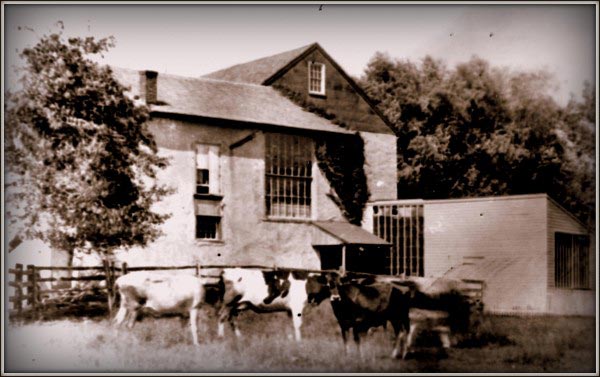
And here is what the developer proposes:
Once again, please show up and let your voice be heard, one way or the other. I’m sure there are some people who would like to see this project go through. I also know, there are more people who care about this property and the history of our community. April 25th, 7:00 Zoning Hearing.
And here is the photo that started the discussion
